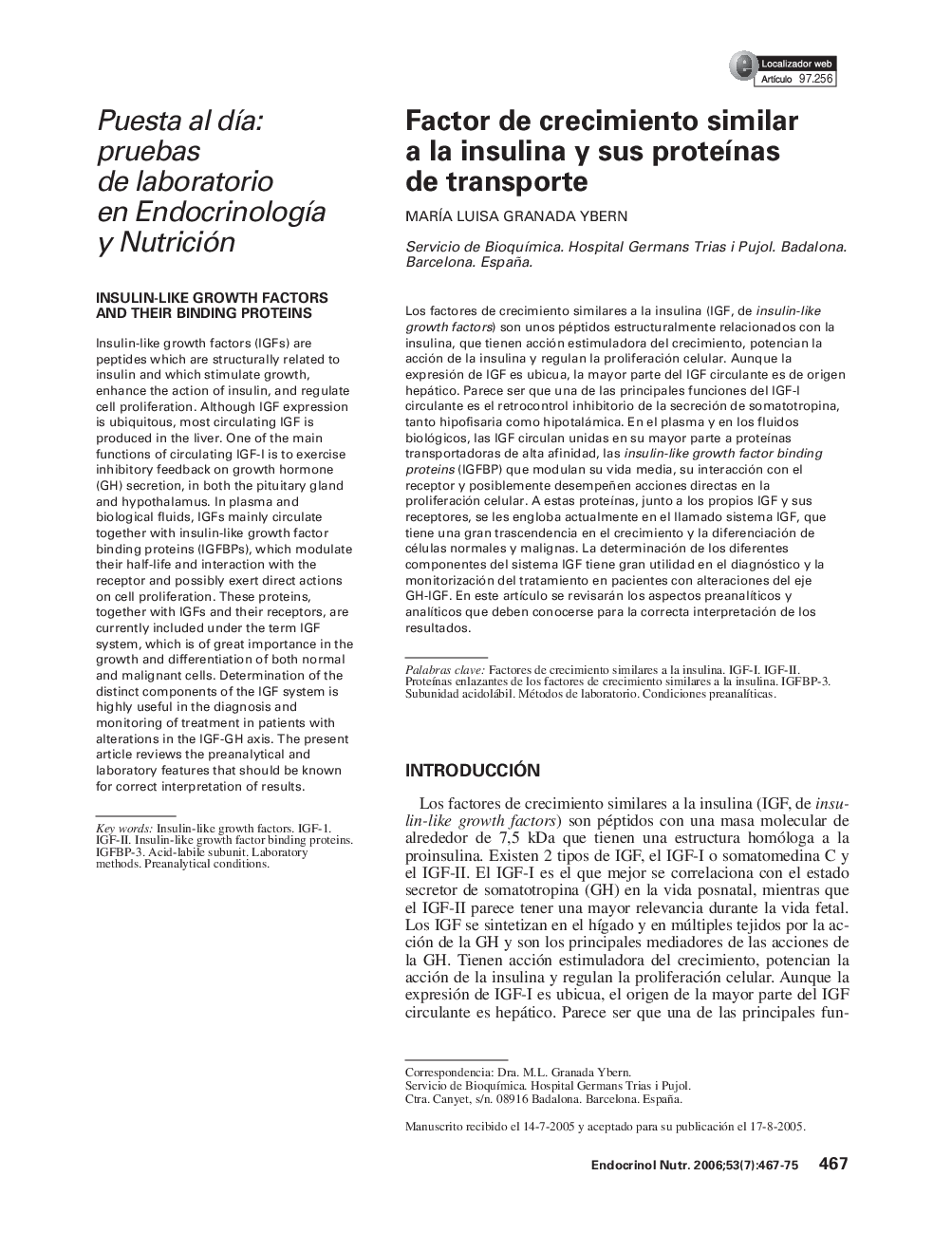| Article ID | Journal | Published Year | Pages | File Type |
|---|---|---|---|---|
| 2774759 | Endocrinología y Nutrición | 2006 | 9 Pages |
Abstract
Insulin-like growth factors (IGFs) are peptides which are structurally related to insulin and which stimulate growth,enhance the action of insulin, and regulate cell proliferation. Although IGF expression is ubiquitous, most circulating IGF is produced in the liver. One of the main functions of circulating IGF-I is to exercise inhibitory feedback on growth hormone (GH) secretion, in both the pituitary gland and hypothalamus. In plasma and biological fluids, IGFs mainly circulate together with insulin-like growth factor binding proteins (IGFBPs), which modulate their half-life and interaction with the receptor and possibly exert direct actions on cell proliferation. These proteins,together with IGFs and their receptors, are currently included under the term IGF system, which is of great importance in the growth and differentiation of both normal and malignant cells. Determination of the distinct components of the IGF system is highly useful in the diagnosis and monitoring of treatment in patients with alterations in the IGF-GH axis. The present article reviews the preanalytical and laboratory features that should be known for correct interpretation of results.
Keywords
Related Topics
Life Sciences
Biochemistry, Genetics and Molecular Biology
Clinical Biochemistry
Authors
MarÃa Luisa Granada Ybern,
